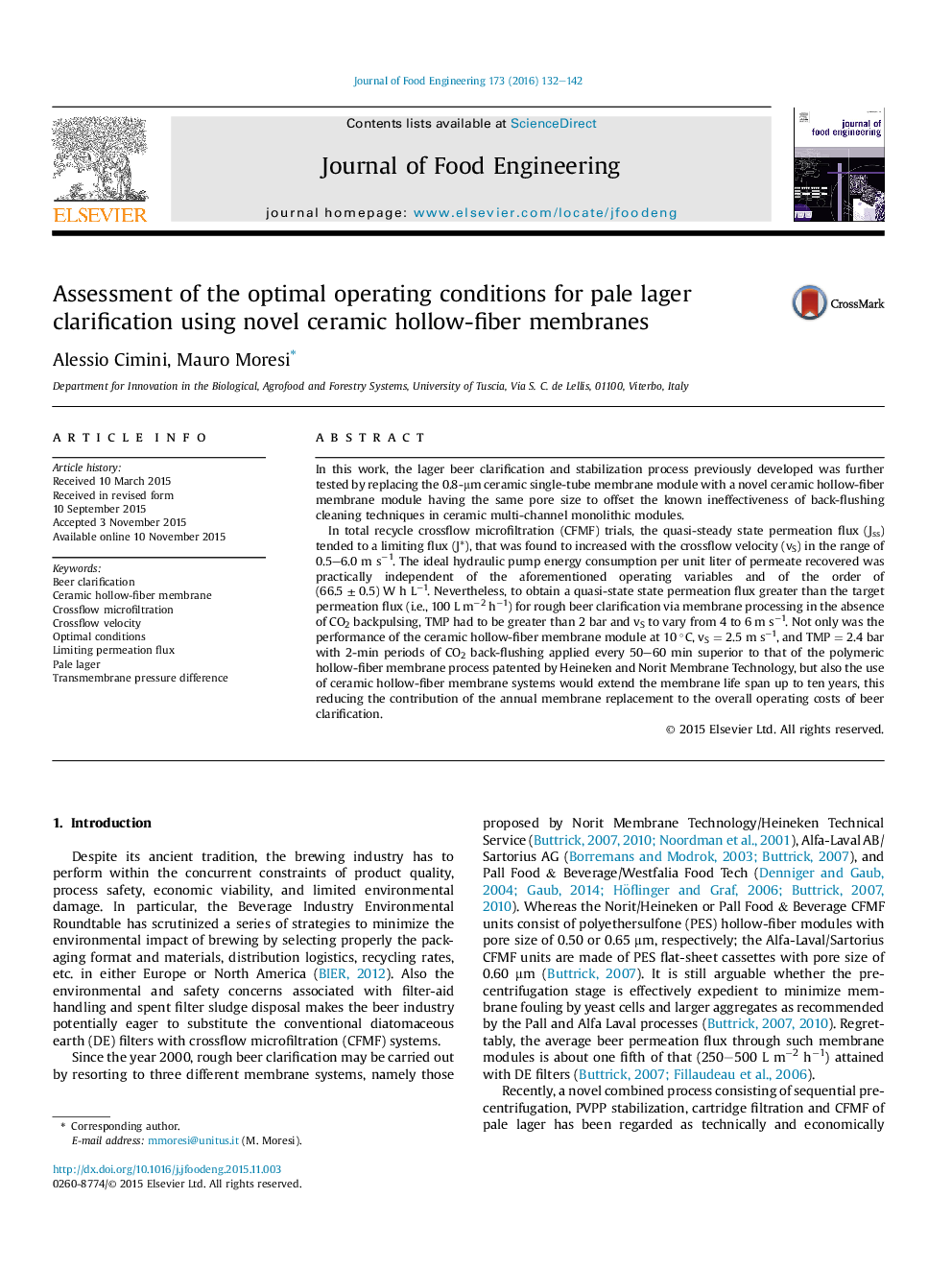| کد مقاله | کد نشریه | سال انتشار | مقاله انگلیسی | نسخه تمام متن |
|---|---|---|---|---|
| 222770 | 464295 | 2016 | 11 صفحه PDF | دانلود رایگان |
• Lager clarification was performed using a novel ceramic hollow-fiber (HF) membrane module.
• The quasi-steady state permeation flux was greater than 100 L m−2 h−1 for TMP>2 bar and vS in the range of 4–6 m s−1 in the absence of CO2 backflushing.
• The theoretical pump energy consumption was about 66.5 Wh per liter of beer permeate.
• The process performance with CO2 backflushing was superior to the industrial polymeric HF membrane processes.
• The use of ceramic HF membranes having a 10-yr life span would reduce membrane replacement costs.
In this work, the lager beer clarification and stabilization process previously developed was further tested by replacing the 0.8-μm ceramic single-tube membrane module with a novel ceramic hollow-fiber membrane module having the same pore size to offset the known ineffectiveness of back-flushing cleaning techniques in ceramic multi-channel monolithic modules.In total recycle crossflow microfiltration (CFMF) trials, the quasi-steady state permeation flux (Jss) tended to a limiting flux (J*), that was found to increased with the crossflow velocity (vS) in the range of 0.5–6.0 m s−1. The ideal hydraulic pump energy consumption per unit liter of permeate recovered was practically independent of the aforementioned operating variables and of the order of (66.5 ± 0.5) W h L−1. Nevertheless, to obtain a quasi-state state permeation flux greater than the target permeation flux (i.e., 100 L m−2 h−1) for rough beer clarification via membrane processing in the absence of CO2 backpulsing, TMP had to be greater than 2 bar and vS to vary from 4 to 6 m s−1. Not only was the performance of the ceramic hollow-fiber membrane module at 10 °C, vS = 2.5 m s−1, and TMP = 2.4 bar with 2-min periods of CO2 back-flushing applied every 50–60 min superior to that of the polymeric hollow-fiber membrane process patented by Heineken and Norit Membrane Technology, but also the use of ceramic hollow-fiber membrane systems would extend the membrane life span up to ten years, this reducing the contribution of the annual membrane replacement to the overall operating costs of beer clarification.
Journal: Journal of Food Engineering - Volume 173, March 2016, Pages 132–142
